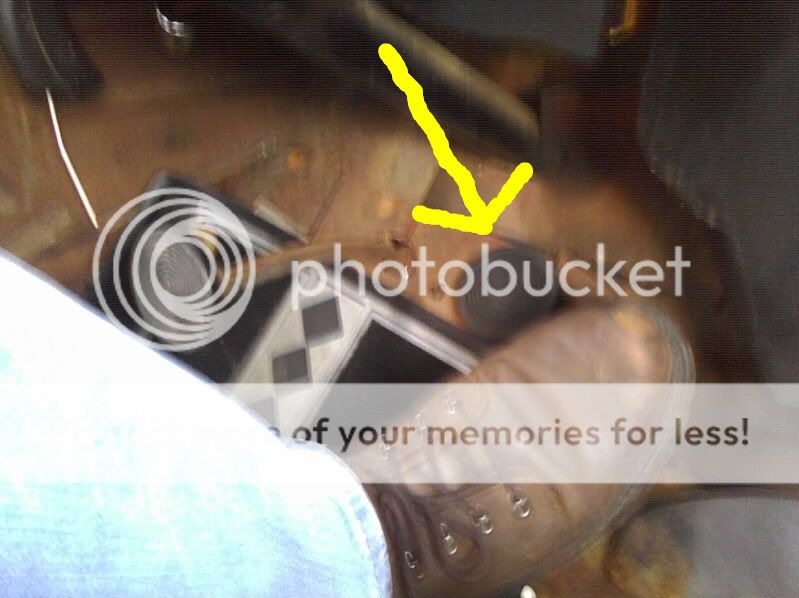I took my '40 to a car show today. Everything up to the show (and the show itself) went great. It's when we decided to leave that the gremlins in my car started messing with the brakes! As I went to stop and a stop sign (thankfully, there was no other traffic there) my brake pedal went right to the floor!  This was odd because when I left, the master cylinder was full. I was only a mile and a half from home, so we just limped it back down a back country road. When I got it in the garage, I took the cap off the master cylinder to find that it still had a little under half full of break fluid. At first, I thought I had blown a break line, but I actually didn't. When I pumped the pedal and looked under it, I saw fluid shooting from the back of the master cylinder. Somebody at one time put an electronic brake light switch on it and it cracked under pressure! So I replaced it with a brass plug. What was really scary is that I didn't have brakes, and my emergency brake dosen't work! The point of this story, EVERYBODY CHECK YOUR BRAKES!! But I still can't believe an electric switch/plug would crack like that (It wasn't being used anyway, I have a mechanical brake switch off the pedal).
This was odd because when I left, the master cylinder was full. I was only a mile and a half from home, so we just limped it back down a back country road. When I got it in the garage, I took the cap off the master cylinder to find that it still had a little under half full of break fluid. At first, I thought I had blown a break line, but I actually didn't. When I pumped the pedal and looked under it, I saw fluid shooting from the back of the master cylinder. Somebody at one time put an electronic brake light switch on it and it cracked under pressure! So I replaced it with a brass plug. What was really scary is that I didn't have brakes, and my emergency brake dosen't work! The point of this story, EVERYBODY CHECK YOUR BRAKES!! But I still can't believe an electric switch/plug would crack like that (It wasn't being used anyway, I have a mechanical brake switch off the pedal).  (The brakes work now)
(The brakes work now)

 This was odd because when I left, the master cylinder was full. I was only a mile and a half from home, so we just limped it back down a back country road. When I got it in the garage, I took the cap off the master cylinder to find that it still had a little under half full of break fluid. At first, I thought I had blown a break line, but I actually didn't. When I pumped the pedal and looked under it, I saw fluid shooting from the back of the master cylinder. Somebody at one time put an electronic brake light switch on it and it cracked under pressure! So I replaced it with a brass plug. What was really scary is that I didn't have brakes, and my emergency brake dosen't work! The point of this story, EVERYBODY CHECK YOUR BRAKES!! But I still can't believe an electric switch/plug would crack like that (It wasn't being used anyway, I have a mechanical brake switch off the pedal).
This was odd because when I left, the master cylinder was full. I was only a mile and a half from home, so we just limped it back down a back country road. When I got it in the garage, I took the cap off the master cylinder to find that it still had a little under half full of break fluid. At first, I thought I had blown a break line, but I actually didn't. When I pumped the pedal and looked under it, I saw fluid shooting from the back of the master cylinder. Somebody at one time put an electronic brake light switch on it and it cracked under pressure! So I replaced it with a brass plug. What was really scary is that I didn't have brakes, and my emergency brake dosen't work! The point of this story, EVERYBODY CHECK YOUR BRAKES!! But I still can't believe an electric switch/plug would crack like that (It wasn't being used anyway, I have a mechanical brake switch off the pedal).  (The brakes work now)
(The brakes work now)




Comment